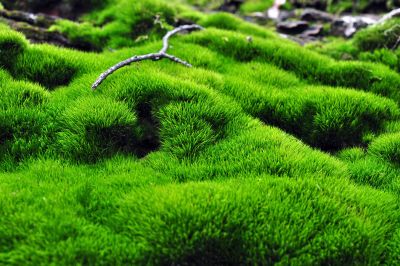Mosses That Enhance Gardens
There are many benefits to incorporating different strains of mosses into your garden. Mosses require minimal maintenance and provide a soft, cushioned landscape for yourself and your family. These beautiful, intensely green species can transform a grassy area in desperate need of attention into a veritable nature wonderland. Perhaps the soil in your area is too acidic for the lush, verdant yard of your dreams, or perhaps you enjoy the shade cast by your massive oak trees too much to cut them down and give the grass more sunlight. If the grass is not producing the yard you want, mosses may be your answer.
Selecting the Right Moss for the Job
There are around twelve thousand moss species worldwide, and many of them are difficult to identify without a microscope and years of experience. Carpet Moss, genus Hypnum, is used to refer to about eighty species of mosses. These tend to favor decaying wood in well-hydrated areas. Sheet moss, Hypnum curvifolium, is one of these types of carpet moss, which describes the way the moss grows outwardly in dense mats of brilliant green to cover large landscapes. These are typically used in most moss gardens.
Planning (and Planting) Your Moss
Mosses appear naturally in landscapes more favorable to moss growth than grass growth. If your yard is naturally conducive to mosses with plenty of shade and water cultivating what is already there could prove beneficial to your gardening plans. If you would instead transplant a few species from your local wooded areas, mosses can be easily removed and rehomed in your yard. As mosses do not have root systems that anchor the organism to the ground like grasses, they are easily excavated by hand or by trowel and replanted as you see fit.
The remaining grass must be removed to the root lest it competes with your transplanted mosses. Once the mosses are placed, either in long sheets or small sections, the moss will take over, provided the environment is amenable. Checking the amount of water and shade in a given area is paramount, and maintaining the proper pH level will ensure a wild growth of moss. Mosses reproduce via spores, not seeds, and these spores can be carried by wind or rain to new areas and eventually cover the entire landscape.

Maintaining Your Moss Garden
If mosses have occurred naturally in your garden or yard, then maintenance might not be much of an issue. The preconditions for moss growth are water and shade and “if your landscape already possesses those, then half the work is done. If you have used mostly transplanted mosses, light watering may be necessary. Over-treading and fallen leaves and limbs can also be worries for transplanted moss; mosses gather water directly from rain and water vapor, and anything that prevents that, such as a covering of fall leaves, could cause problems. Aside from the occasional weeding, your moss garden will thrive.
